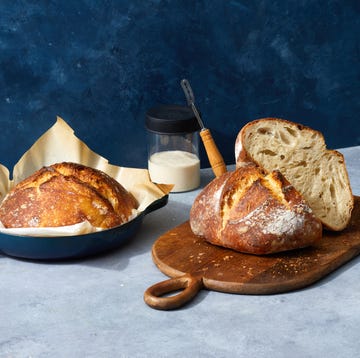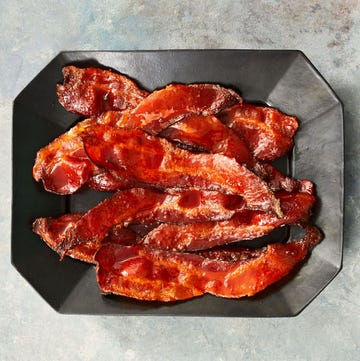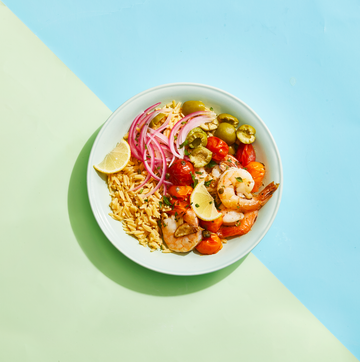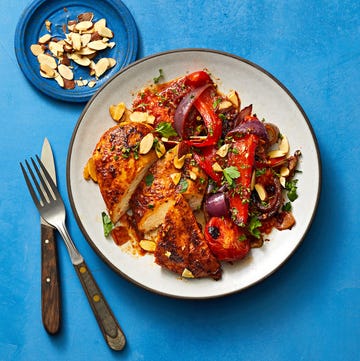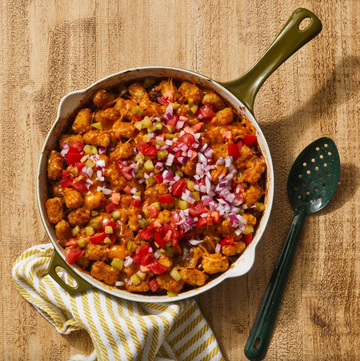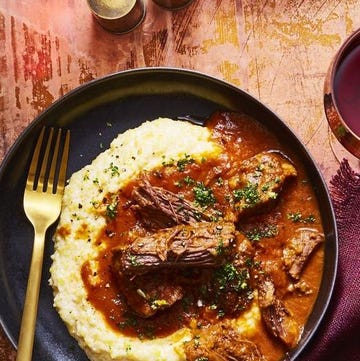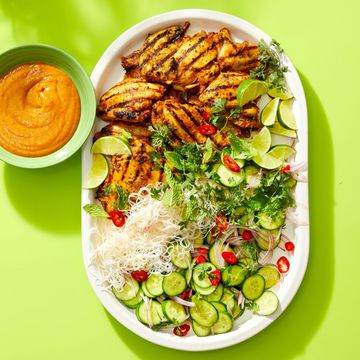Rosé is the pink wine you start drinking once it's open-window season — but do you really know what it is? You might be tempted to think that rosé refers to the type of grape. After all, Chardonnay is made from Chardonnay grapes, Pinot Noir is made from Pinot Noir grapes, so rosé is made from rosé grapes, right? Not exactly.
Rosé is a color-based category of wine, much like white or red wine. There is no grape varietal called “rosé” just like there isn’t one called “white” or “red.”
Now, brace yourself for a potentially surprising fact: All the grape juice used for winemaking is clear (or greenish, at most) — yes, even for red wine. What gives vino its color is the pigment from the grape skin. Ready for another shocker? True rosés are not made from pink-skinned grapes; rosés are primarily made from red grapes (often the same ones used to make red wine).
So why is rosé pink and not fully red? The grape juice spends less time in contact with the grape skins than if you were making red wine. Another way it gets its signature rosy hue is by blending a small amount of red wine into the base, which is often the case for sparkling rosé.
You may have heard rosé called by its nickname “summer water.” That’s referring to the super light, crisp style that’s oh-so refreshing in the warmer months but there are actually many more expressions of this wine. There's no reason to relegate it to one season when there are plenty of rosés that are suitable for year-round drinking.
Another misconception is that rosé is an unserious wine that’s just meant for casual occasions, like brunches and picnics. The truth is, there are complex and substantial rosés that can be paired with all kinds of food, including easy appetizers, Thanksgiving menus and holiday dishes.
Ahead, we're diving into the many different flavors of rosé, how to tell if a bottle is sweet, as well as foods that make a terrific match for this versatile wine.
How does rosé taste?
The taste depends on the type of grapes used and where they are grown. For instance, the pale blush rosés from the Provence region of France tend to be light, crisp and dry with hints of berries and peaches. Whereas rosés from certain parts of California are more round and full-bodied with aromas of watermelon and citrus. You can find rosés from pretty much every wine region, each evoking the signature style of where it was made.
Here are just some of the common flavor notes:
- Fruit: berries, cherries, melons, tropical fruit, citrus, peaches and other stone fruit
- Floral: rose, honeysuckle, hibiscus, violet
- Other: minerals, herbs, grass, spices, hard candy
The rosés from France, Italy, Germany and Austria will typically be crisper and higher in acid. Whereas you'll often find more fruit and relatively less acid in rosés from Spain and the New World (the United States, South America, Australia, New Zealand and South Africa).
Is rosé sweet?
Yes, some are but the vast majority of rosés are not sweet — and many are actually bone-dry. How can you tell if a rosé is sweet or dry? The word “sweet” in the name is often a dead giveaway.
You can also check the ABV (alcohol by volume) on the label. Dry rosés are in the range of 12% to 13% ABV. Sweet ones will be lower in alcohol (often 7% to 11% ABV) because the wine retains residual sugar that otherwise would have fermented into alcohol — or in some cases, after letting the sugar ferment into alcohol, the winemaker dropped in additional sugar for a sweeter taste.
But, in general, the lower the ABV, the sweeter the wine. Take a look at white zinfandel, a slightly sweet style of rosé. The label will often reveal an ABV in the 8% to 10% range.
Does the color of rosé affect the flavor?
Someone call Adam Savage and Jamie Hyneman because it’s time to bust the myth that darker rosés are sweeter. You can find this wine in all shades, ranging from very pale ballet slipper pink to practically ruby, even resembling a very light red wine. The darker color can be due to using grapes with darker or thicker skins or a longer maceration time, which releases more tannins — so, if anything, the resulting rosé would be less sweet.
What are the best food pairings for rosé?
Rosé loves food and the feeling is mutual. It has a natural affinity for dishes from the south of France and the surrounding Mediterranean region but there are so many kinds of rosé that can pair with literally everything from soup to nuts. Remember that this is a category of wine based on color and can represent many different flavor profiles, ranging from light, crisp and bone-dry to more full, fruity and supple.
Another thing to keep in mind when pairing is to match weight for weight. So pair more delicate rosés with food that's similarly light on its feet, like salads and mild fish. On the other hand, bigger, fuller-bodied rosés can stand up to more substantial fare with robust flavors, like hearty pastas and grilled meats. Wondering what to avoid? Generally, rosé doesn't pair well with cream sauces. You'll also want to skip serving spicy dishes alongisde a dry rosé.
The following is a list of some of our favorite types of foods to pair with rosé:
- Southern French, Mediterranean, Middle Eastern and Moroccan foods: Ratatouille; bouillabaisse; hummus, babaganoush and mezze platters; chickpea, chicken or lamb tagine
- Seafood: Especially salmon dishes, smoked salmon and grilled shrimp; all shellfish, especially mussels; tinned fish
- Pasta: Especially puttanesca, pasta alla Norma, seafood pasta with tomatoes and pasta in pink sauces
- Tomatoes and tomato-based dishes: Tomato salad, Caprese salad, bruschetta, tomato tart
- Chicken and “other” white meats: Turkey, veal, pork (especially grilled pork or roasted pork),
- Salads: Especially Niçoise salad, Greek salad and anything with olives or anchovies
- Cheese: Young cheeses, like mozzarella and fresh goat cheese; feta; soft, creamy cheeses (especially with sparkling rosé)
- Charcuterie: Prosciutto, salami and Spanish jamón (especially with sparkling rosé)
- Pizza: Margherita, tomato and ricotta or vegetable toppings (especially with sparkling rosé)





